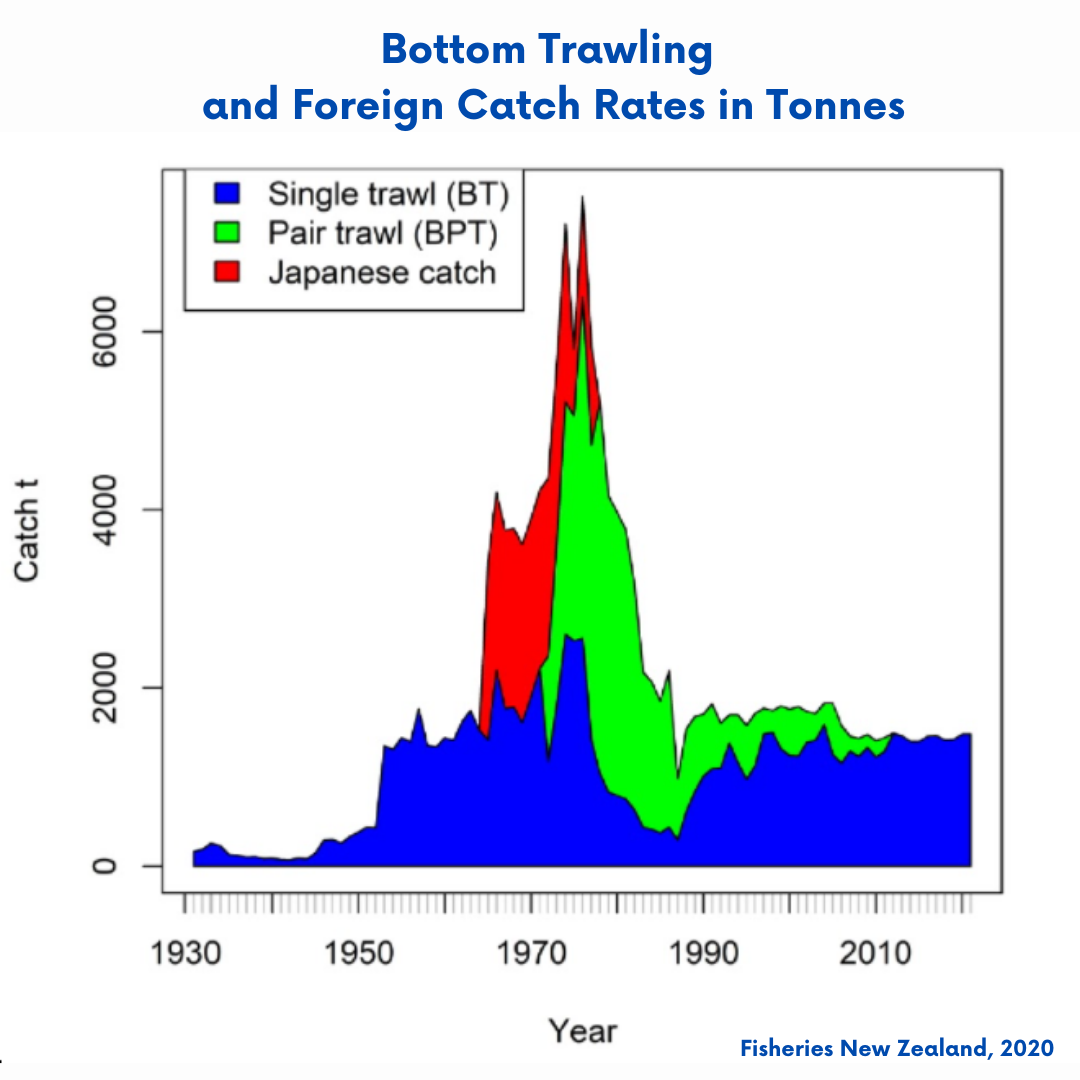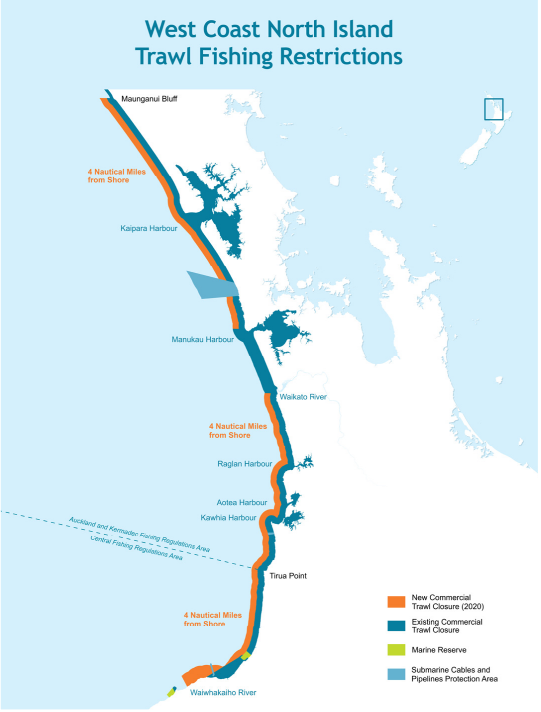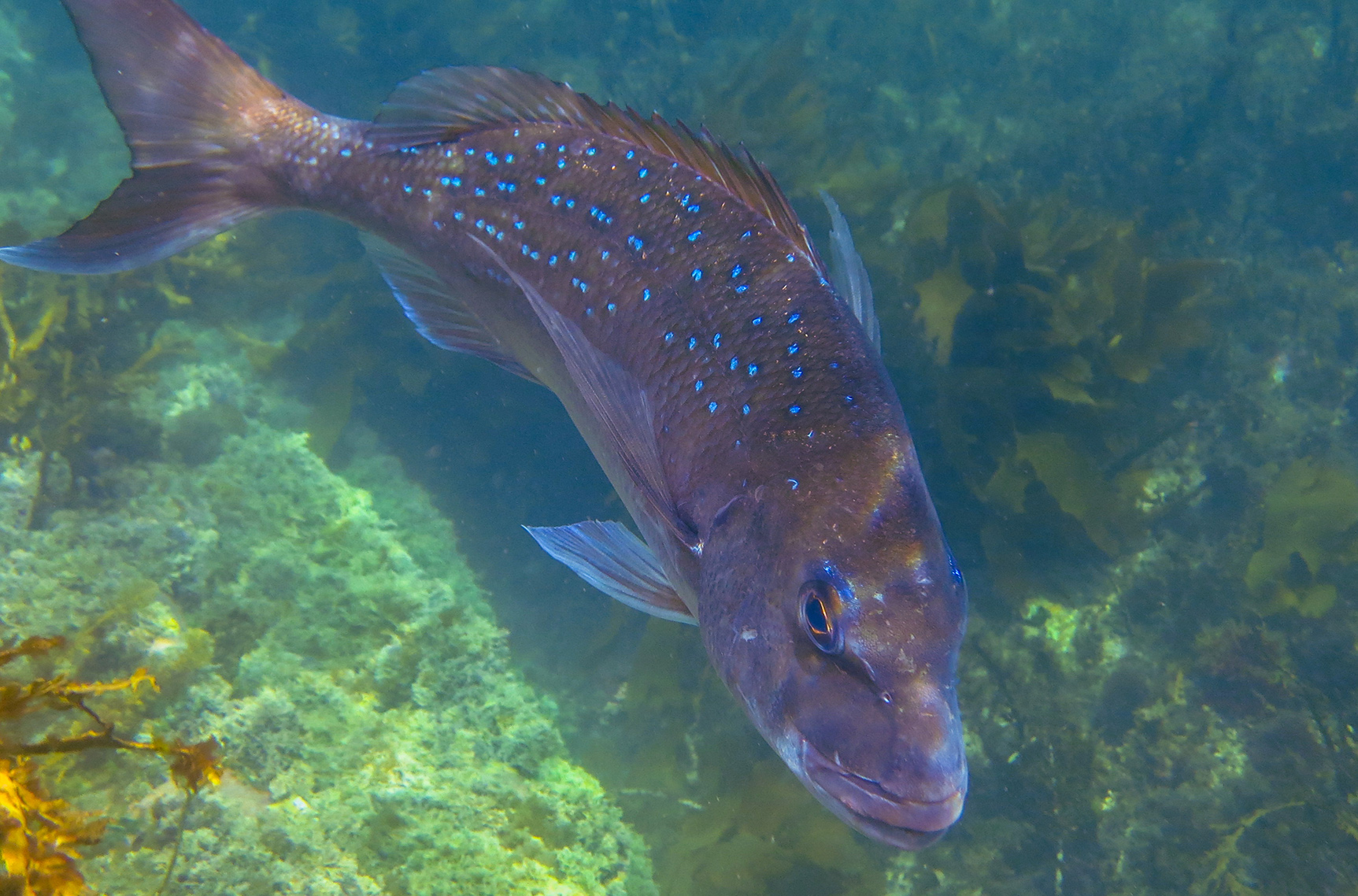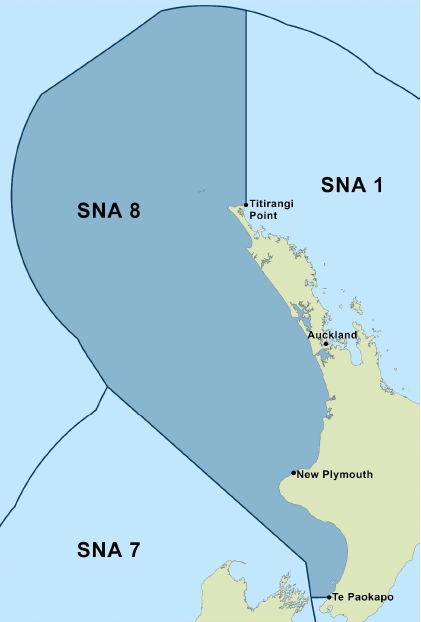Snapper 8 review
Have your say
After 33 years of rebuilding, the Snapper 8 (SNA 8) fishery is finally in good shape, reaching an estimated biomass of 54% of the original population size.
MAKE YOUR SUBMISSION HERE
Fisheries NZ is proposing four potential options to increase the Total Allowable Commercial Catch (TACC) of 1300 tonnes. They propose to increase the TACC by either 25, 50, 75 or 100%.
More commercial fishing in Snapper 8 means more bottom trawling, and this could jeopardise the recovery of snapper.
LegaSea is supporting Option Zero. No TACC increase.
We are taking a conservative stance because an increase in the TACC and trawling effort will have consequences for other, more vulnerable species in the area. Species affected include red gurnard, tarakihi, john dory, juvenile hāpuku and trevally.
Now is your chance to have a say. Let’s tell the Minister he needs to support Option Zero. No trawling. No commercial snapper catch increases. Let’s be conservative.
SNA 8 was last reviewed 16 years ago, when there was a prospect of commercial catch increases. Back then the opposite occurred, all catch settings were reduced to try and rebuild the fishery because it was below acceptable sustainability levels. Now the fishery has bounced back to a more abundant level, we urge the Minister to act with caution.
There is no rush. These snapper are not leaving on a travel bubble. We can review the snapper stock in 3 years time and increase catches if it’s still abundant.
Since 2008 there has been a decrease of trawl effort in certain areas due to the trawl exclusion zones set aside to protect Hector’s and the endangered māui dolphins. Removal of this destructive fishing technique has supported the ecosystem to rebound and contributed to rebuilding the snapper population.
We reckon the conservation principle should be followed. The Minister needs to be bold enough to step past the Ministry’s options and choose Option Zero. Submissions are due by July 27th. You can email your submission to FNZ using this form.
Snapper 8 History
Snapper 8 (SNA 8) is the second largest snapper fishery in New Zealand, encompassing a large population of snapper and trawl exclusion zones created for protection of the māui dolphin. The fishery area is situated along the west coast of the North Island from North Cape down to Kapiti.
protection of the māui dolphin. The fishery area is situated along the west coast of the North Island from North Cape down to Kapiti.
Industrial fishing of snapper on the west coast peaked during the 1960s through to the 1990s, with the increased use of bottom pair trawling, and the presence of foreign vessels coming in for their share of the catch. Increased trawling led to a crash in west coast snapper numbers – By the time snapper was introduced into the Quota Management System in 1986 the population was at 7% of its estimated, original size before industrial fishing began. This means 93% of all snapper biomass had died or been taken out of the water.
In 1986 the initial Total Allowable Commercial Catch (TACC) was set at 1330 tonnes. By 1989 it had increased to 1594 tonnes, then decreased to 1500 tonnes in 1992 and 1300 tonnes in 2005.
By 1996 there was a lot of concern about the targeting of spawning snapper outside the west coast harbour entrances, particularly the Kaipara and Manukau Harbours. The Minister was asked to increase the size of the trawl exclusion bubbles around the entrances, from 2 to 5 miles. The Minister said no, turning down the chance to save juvenile snapper and future stocks from trawling.
In 1998 a new Minister introduced an informal rebuild plan to try and restore the west coast snapper population within 10 years.
 By 2005 Snapper 8 was still in dire straits, sitting around 10% of its original population size. The Minister cut all catch levels by 13% in a blanket attempt at conservation. The TACC was reduced from 1500 to 1300 tonnes and the non-commercial allowances were also cut.
By 2005 Snapper 8 was still in dire straits, sitting around 10% of its original population size. The Minister cut all catch levels by 13% in a blanket attempt at conservation. The TACC was reduced from 1500 to 1300 tonnes and the non-commercial allowances were also cut.
This proportional cut was controversial. There were loud protests. Advocates for recreational and customary interests said the cuts were unfair because amateur fishers had been conserving fish (Check out the section below) while commercial fishers continued to exceed their annual allocation.
The Snapper 8 fishery rebuild was being suppressed by excessive commercial fishing and unbridled trawling effort.
The west coast of the North Island is home to the critically endangered dolphin species, the māui dolphin, and occasional visitor subspecies, the nationally endangered Hector’s dolphin. Māui dolphin numbers had been crashing for years.
dolphin species, the māui dolphin, and occasional visitor subspecies, the nationally endangered Hector’s dolphin. Māui dolphin numbers had been crashing for years.
In order to protect the declining population, in 2008 dolphin protection areas were introduced. Measures included more trawl exclusion zones, set net exclusion zones, and the establishment of marine mammal sanctuaries.
Recently the trawl exclusion zone was extended. It is now 17,530 km squared, and extends out 4 nautical miles off the coast stretching from Maunganui Bluff to Waiwhakaiho river in New Plymouth.
Alongside the protection of these endangered dolphin species, we anticipate that the populations of snapper and other species will be protected and could rebuild faster if there are extensive seabed zones protected from trawling.
Now in 2021, the west coast snapper population is estimated to be at 54% of the original population size. There is not enough data for scientists to estimate the population size of other species caught with snapper out west. Because we don’t have a population estimate for red gurnard, trevally, john dory or tarakihi the Minister must act with caution when making his decisions this year.
Recreational conservation efforts
Back in the 1990s when the Snapper 8 fishery was in deep trouble, recreational fishers voluntarily contributed efforts that would help bring back more snapper in the water. The first recreational daily bag limit set in 1985 was 30 per person per day, now it’s 10.
In 1995, local west coast recreational fishers wanted to be part of a change that would conserve fish populations for generations to come.
Led by the late Paul Barnes, recreational fishers using longlines volunteered to reduce the number of their hooks from 50 down to 25, to sustain the snapper population.
Paul was also instrumental in the discussions leading to an increase in the recreational snapper minimum size limit from 25cm to 27cm, and reducing the daily bag limit from 20 to 15 per person in the mid 1990s.
In 2005 it was estimated the increased minimum legal size alone reduced recreational harvest out west by around 15-19%. All up, around 27% of snapper catch was conserved due to these actions.
These voluntary conservation measures have not come without consequences. They had a long-term impact on recreational fishers in the Kaipara and Manukau harbours. Since the 70s it has been difficult for harbour fishers to catch a reasonable number of legal-sized snapper. The good news is that these voluntary efforts by recreational fishers have not been wasted. As the snapper fishery has rebuilt larger fish are now being harvested inshore.
We applaud the efforts all fishers have made to look after snapper, they have surely contributed to the increased abundance we see off the west coast today.
MAKE YOUR SUBMISSION HERE
For more information on the review from Fisheries NZ click the link below: https://www.mpi.govt.nz/consultations/review-of-sustainability-measures-2021-october-round/


